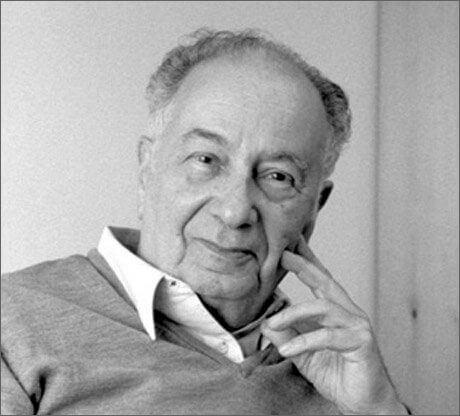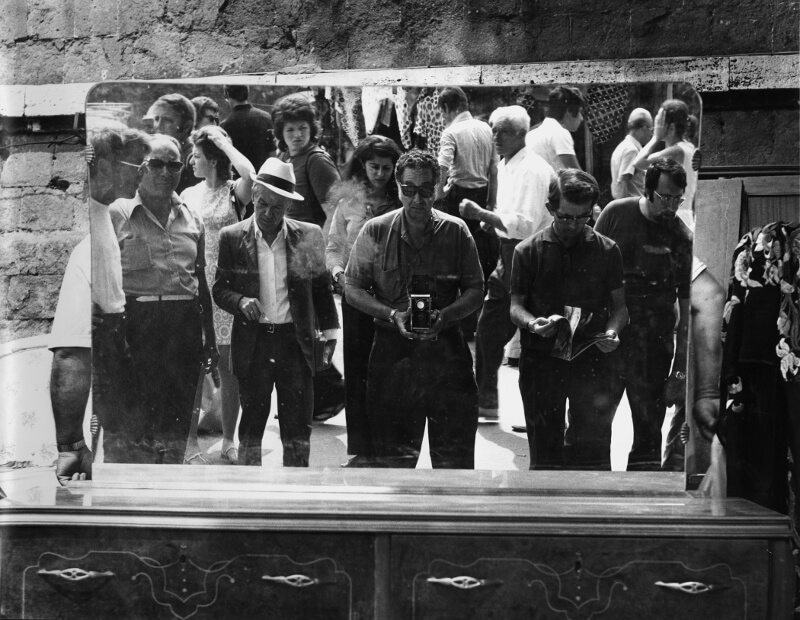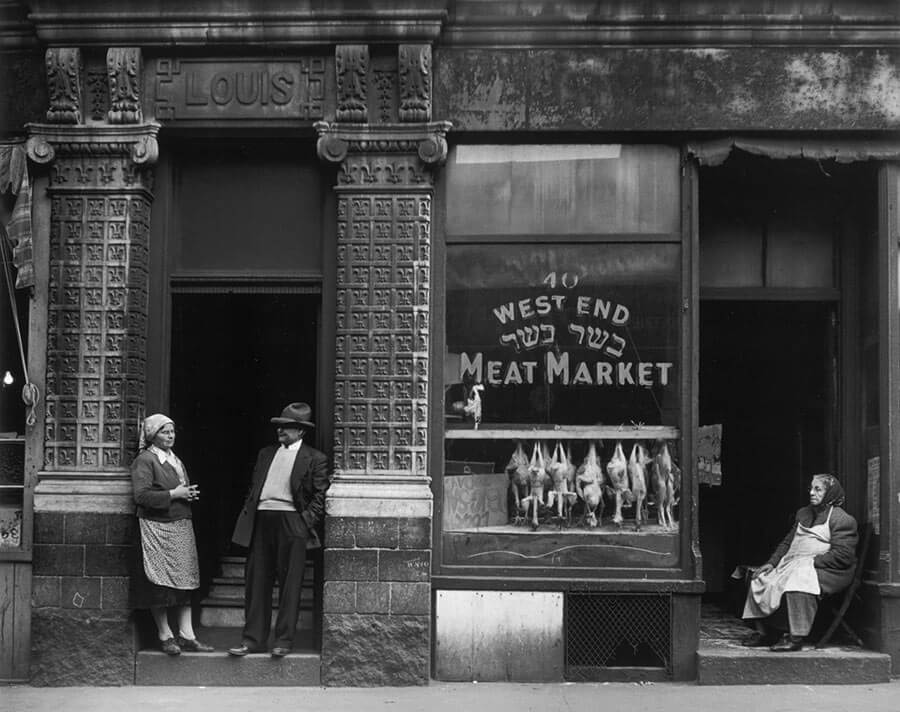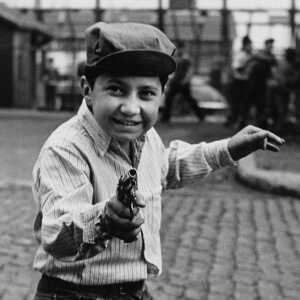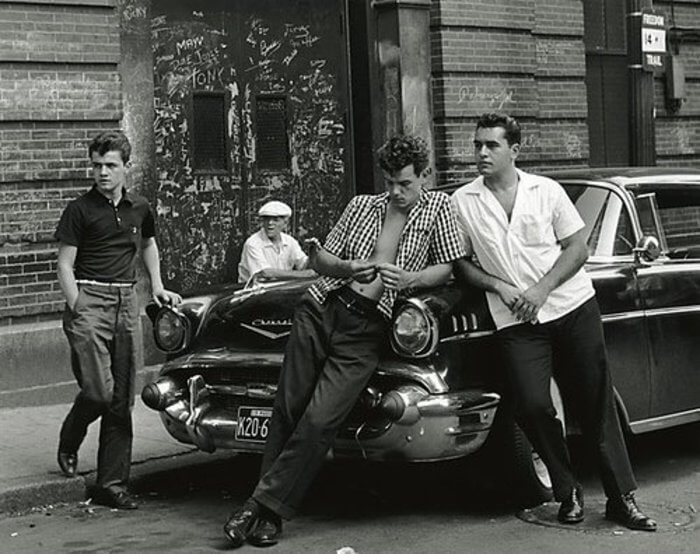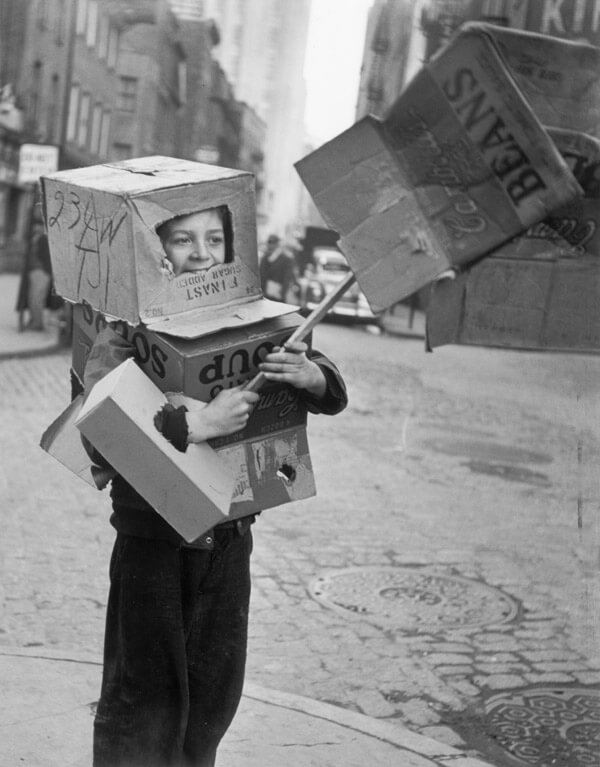Jules Aarons
Jules Aarons’ candid photographs of the old West End are a special window into the social life of the neighborhood. His son, Philip, and grandson, Zach, have carried on the legacy of these pictures in creative ways.
Jules Aarons was born in the Bronx, New York on October 3, 1921. His parents were Jewish immigrants; his father, Joseph Aarons, was a dress-cutter in New York’s garment industry. Jules Aarons graduated from City College of New York in 1942, and served in the Army Signal Corps during World War 2. The Army Signal Corps played a notable role in that war not only for its innovations in electronic communication and radar, but also for photographing and filming military campaigns such as the invasion of Normandy on D-Day. Aarons’ participation in the Signal Corps shaped his two major interests: radio waves, which he studied as a physicist, and street photography, for which he became internationally renowned. Aarons’ deep connection to the West End lies with his photographs, which he took shortly before urban renewal razed the neighborhood.
Aarons received his masters degree in Physics at Boston University in 1949, and his PhD at the University of Paris in 1953. During this time he also worked as a lead scientist at the geophysics laboratory of the Hanscom Air Force Base in Bedford, MA. But it was in 1947 when Aarons started taking photographs of the old West End, which may have reminded him of his childhood in the Bronx. He recalled that “I began to take black-and-white photographs with the aim to document Boston, its streets and its people, while also developing my own style. I resolved to capture the day-to-day life experiences of the people, avoiding scenes of poverty.” Aarons used a double-lens Rolleiflex to take candid photographs of West Enders interacting with one another on their streets. His goal was to capture the West End’s social environment without being intrusive, as people’s behavior may have shifted had they been standing or posing for a photograph. Aarons told the Boston University Bridge newspaper that “unguarded moments” gave “spirit” to his photographs. Notable pictures feature West Enders outside a Jewish meat market, three girls playing together, a boy in a cardboard astronaut costume, and four young men leaning on a car. Sometimes Aarons took traditional, non-candid photographs, such as one of five girls smiling in front of the stairs to an apartment.
Aarons became a professor at Boston University in 1981 after retiring from the Hanscom laboratory, and it was at BU where he led projects on space physics, specifically the influence of the atmosphere on radio waves. Aarons founded the university’s Center for Space Physics in 1987. Aarons had stopped taking photographs once he became a BU professor, not for lack of time but rather because his eyes had grown too irritated by darkroom chemicals. But the legacy of his photographs has carried on through exhibitions at institutions such as the Boston Public Library (2010) and the West End Museum (2013). The West End Museum presented “Life in the West End 1947-1953: The Photography of Jules Aarons” with guest curator Arlette Kayafas, who noted that “The striking thing about these pictures is their humanity. Aarons’ greatest asset was the compassion he felt for his subjects.”
Aarons passed away in 2008, but his son Phillip and grandson Zach have creatively used Jules’ pictures in different ways. Phillip Aarons founded Millennium Partners, a mixed-use real estate developer, in 1991. He intends to have Jules Aarons’ photographs of the old West End featured in the common areas of Boston’s Winthrop Center, currently under construction. Aside from family ties, Phillip believes that local artists, living or dead, should see their work reflected in new, local buildings. Zach Aarons co-founded the PropTech venture capital company in the Garment District of New York City – where Joseph Aarons worked – and Jules’s photos of the old West End line the walls of the office.
Article by Adam Tomasi
Source: North End Waterfront; Lumiere Gallery; US Holocaust Memorial Museum (for Army Signal Corps); julesaarons.com (for biographical information); PropModo


